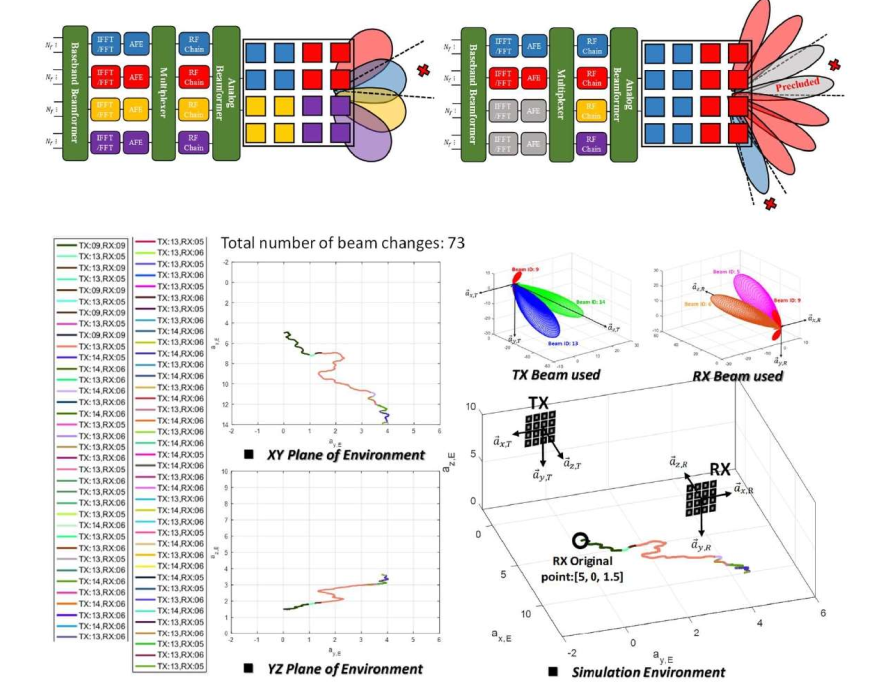Topic 1: Intelligent resource management and service provisioning for open radio access networks (O-RAN)

Mobile networks have seen more than a thousand times traffic increases in the past decade. Network operators face an ever increasing demand and cost to deploy denser networks in order to maintain the quality of services. In view of this paradigm shift, we present an open cloud radio access network (O-RAN/C-RAN) service model in this work. Integrating the cross-layer functions of spectrum resource sharing, channel and power allocation, and interference management in an O-RAN/C-RAN architecture, we explore the feasibility of providing a scalable yet efficient broadband wireless service with dense small cell networks (DSN). The proposed methods and architecture can be applied to DSN that support the functions of (further enhanced) inter-cell interference cancelation (feICIC/ICIC) techniques of 3GPP standard, and have the potential to provide a cost-effective solution for high-quality DSN. Simulation results across an area of 100 km2 show that the proposed scheme can offer an aggregate downlink throughput of 21 Gbps over a maximum channel bandwidth of 20 MHz, which is 5 times the throughput with a typical ICIC method, making it a promising and cost-effective solution for future broadband wireless services. The related research papers are listed as follows:
S.-H. Wu, C.-H. Ko, and H.-L. Chao, “On-Demand Coordinated Spectrum and Resource Provisioning under an Open C-RAN Architecture for Dense Small Cell Networks,” early access on IEEE Trans. on Mobile Computing, Oct. 2022. (Link)
S. -H. Wu et al., “A cloud model and concept prototype for cognitive radio networks, ” in IEEE Wireless Communications, vol. 19, no. 4, pp. 49-58, August 2012. (Link)
S. -H. Wu, H. -L. Chao, C. -H. Ko, S. -R. Mo, C. -F. Liang and C. -C. Cheng, "Green Spectrum Sharing in a Cloud-Based Cognitive Radio Access Network," in 2013 IEEE International Conference on Green Computing and Communications and IEEE Internet of Things and IEEE Cyber, Physical and Social Computing, Beijing, China, 2013, pp. 276-281 (
Link)
Topic 2: mmWave hybrid beamforming and procoding for next generation mobile networks

An efficient beam and channel acquisition and tracking scheme is developed under a reconfigurable hybrid beamforming (R-HBF) architecture for wideband millimeter wave (mmWave) multiple input multiple output (MIMO) systems. Under such an R-HBF, a hierarchical multi-resolution beam scanning and space-frequency compressive sensing method is proposed to achieve fast beam and channel acquisitions in mmWave MIMO orthogonal frequency division multiplexing (OFDM) systems. With the initial frequency-domain beam space channel estimates, Kalman-based algorithms are further developed to track the transmit and receive beamforming directions and the channel coefficients of the sparse propagation paths in mmWave mobile channels. Simulations show that the proposed method can greatly reduce the beam training time, and that the channel capacity evaluated with the estimated channels is only 2 dB inferior to the one with ideal channels. Moreover, the beam selection error rates are less than 10-3 in typical urban mmWave mobile channels and traveling speeds even if the transmit power is only 10 dBm. The related research papers are listed as follows:
S.-H. Wu and G.-Y. Lu, “Compressive Beam and Channel Tracking with Reconfigurable Hybrid Beamforming in mmWave MIMO OFDM Systems,” in IEEE Trans. on Wireless Communications, vol. 22, no. 2, pp. 1145-1160, Feb. 2023. (
Link)
S.-H. Wu, L.-K. Chiu, and J.-W. Wang, "Reconfigurable hybrid beamforming for dual-polarized mmWave MIMO channels: Stochastic channel modeling and architectural adaptation methods,” in IEEE Trans. on Communications, vol. 66, no. 2, pp. 741-755, Feb. 2018. (
Link)
S.-H. Wu, L.-K. Chiu, K.-Y. Lin and T.-H. Chang, "Robust hybrid beamforming with phased antenna arrays for downlink SDMA in indoor 60GHz channels,” in IEEE Trans. on Wireless Communications, vol. 12, no. 9, pp. 4542-4557, Sept. 2013. (
Link)




